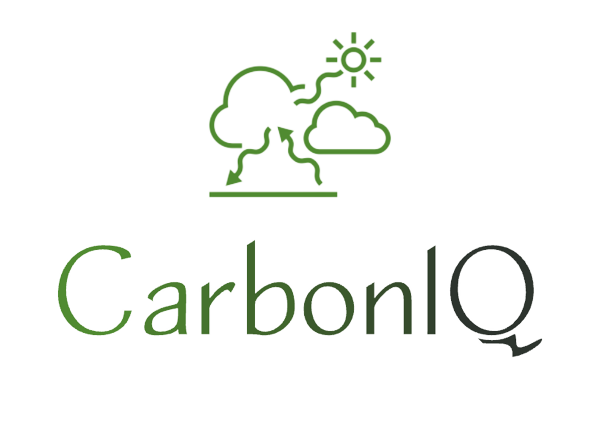Carbon Farming in Kazakhstan as an Exemplary Project for Mitigating and Adapting to Climate Change
Project page in Kazakh
Project page in Russian
The AFOLU sector accounts for about one third of global greenhouse gas emissions (Agriculture, Forestry and Other Land Uses; IPCC, 2023). At the same time, soils are the largest terrestrial carbon pool, sequestering almost four times as much carbon as above-ground biomass and there times as much as our atmosphere (Zommer et al., 2017). However, soils can be both carbon sources and carbon sinks, depending on their management. Extensive research has shown that soil management practices such as the use of organic fertilisers, intercropping, mulching, conservation tillage, agroforestry and species-rich crop rotation systems can significantly increase the organic carbon content of agricultural soils (Paustian et al., 2016; Smith et al., 2008). In addition to carbon sequestration, carbon farming offers numerous economic, environmental and social benefits (Tang et al., 2016). Examples include reduced risk of yield loss (Droste et al., 2020), increased resilience to drought and heavy rainfall (Hamidov et al., 2018), more efficient use of plant nutrients, and increased soil biodiversity.
Duration
01/2024 – 12/2026
Contact:
Sami Celtikoglu
Dr. Arne Reck
Kazakhstan ranks seventh in the world in terms of organic carbon stocks in agricultural soils. The annual increase in organic carbon sequestered in the soil through adapted farming practices is estimated to be 13-27 megatons of carbon per year, ranking Kazakhstan 16th in the world in terms of the sink potential (Zomer et al., 2017). Kazakhstan therefore offers an ideal environment for carbon farming, and the country could play an important role as a global carbon sink in the future. To unlock this potential, farmers need to be more aware of climate change and carbon farming. Payment schemes that reward carbon-enhancing farming practices also need to be developed.
The CarbonIQ pilot study aims to provide a basis for decision-making on the feasibility of carbon farming in Kazakhstan as an important environmental protection and climate change mitigation technology. Specifically, the CarbonIQ project aims to assess the carbon storage potential of Kazakh soils, estimate their capacity and analyse important impacts such as the promotion of biodiversity. As such, the project investigates the opportunities for an ecologic and economic transformation of the agricultural sector in Kazakhstan. “CarbonIQ” also supports economic sustainability by unlocking the potential of soil carbon storage for farmers. Farmers can thus see first-hand how sustainable farming practices can benefit both nature and their own incomes. The project is also exploring the possibility of carbon certificates to reward agricultural practices that have a positive impact on soil organic carbon, and assessing the potential for carbon trading in Kazakhstan. The following figure shows the approaches taken in the project and the underlying questions.
The project is innovative in several ways: by consistently linking climate and environmental protection in agriculture, solutions can be developed that would otherwise be difficult to implement in Kazakhstan. Usually tasks, responsibilities and structures in these topics are strongly separated along sectoral lines. The cross-sectoral approach uses the example of “carbon farming” to demonstrate solutions to the interlinked and mutually reinforcing twin crises of climate change and biodiversity loss. The focus of CarbonIQ is on the agricultural sector, which is both a key driver of these multiple crises and particularly vulnerable to their impacts. The project aims to identify a way forward that includes both solutions and adaptation strategies. In summary, CarbonIQ aims to identify ways in which thinking about agriculture and climate change can work together to build a sustainable future for the Kazakhstan region and contribute to local and global food safety.
Further literature:
Droste, N., May, W., Clough, Y., Borjesson, G., Brady, M.V., Hedlund, K., 2020. Soil carbon insures arable crop production against increasing adverse weather due to climate change. Environmental Research Letters, 15 (12), 124034. DOI: https://doi.org/10.1088/1748-9326/abc5e3
Hamidov, A., Helming, K., Bellocchi, G., Bojar, W., Dalgaard, T., Ghaley, B.B., Hoffmann, C., Holman, I., Holzkämper, A., Krzeminska, D., Kværnø, S.H., Lehtonen, H., Niedrist, G., Øygarden, L., Reidsma, P., Roggero, P.P., Rusu, T., Santos, C., Seddaiu, G., Skarbøvik, E., Ventrella, D., Zarski, J., Schonhart, M., 2018. Impacts of climate change adaptation options on soil functions: a review of European case-studies. Land Degradation and Development, 29(8), 2378–2389. DOI: 10.1002/ldr.3006.
IPCC (Intergovernmental Panel on Climate Change). 2023. Climate Change 2022: Synthesis Report. Contribution of Working Groups I, II and III to the Sixth Assessment Report of the Intergovernmental Panel on Climate Change [Longer Report]. IPCC, Geneva, Switzerland, 85 pp.
Paustian, K., Lehmann, J., Ogle, S., Reay, D., Robertson, G. P., & Smith, P. (2016). Climate-smart soils. Nature, 532(7597), 49-57. DOI: 10.1038/nature17174.
Smith, P., Martino, D., Cai, Z., Gwary, D., Janzen, H., Kumar, P., McCarl, B., Ogle, S., O’Mara, F., Rice, C., Scholes, B., Sirotenko, O., Howdes, M., McAllister, T., Pan, G., Romanenkov, V., Schneider, U., Towprayoon, S., Wattenbach, M., & Smith, J. (2008). Greenhouse gas mitigation in agriculture. Philosophical transactions of the royal Society: Biological Sciences, 363(1492), 789-813. DOI: 10.1098/rstb.2007.2184
Tang, K., Kragt, M.E., Hailu, A., Ma, C., 2016. Carbon farming economics: what have we learned? Journal of Environmental Management, 172, 49–57. DOI: 10.1016/j.jenvman.2016.02.008.
Zomer, R. J., Bossio, D. A., Sommer, R., & Verchot, L. V. (2017). Global sequestration potential of increased organic carbon in cropland soils. Scientific Reports 7(1), 15554. DOI: 10.1038/s41598-017-15794-8.




